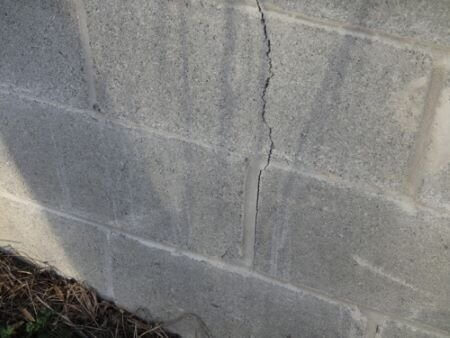Construction is the base and it has to be strong enough to handle the whole structure internally and externally too. There are two alternatives that everyone gets confused with while having a new construction. For those who are experienced won’t have to surpass this confusion. But for those who are not working regularly with these blocks must have a look at the below comparison between AAC blocks and red bricks.
AAC Blocks vs Red Bricks
| Point of difference |
AAC Blocks
|
Red Bricks
|
| General |
- These blocks are lightweight and cut into masonry block or any form one wants.
- These are uniform in texture and sizes.
|
- These blocks are made with clay ceramic and are a bit heavier than AAC blocks.
- These are less uniform in texture and sizes.
|
| Raw Material |
- The AAC blocks are made from a mixture of lime, gypsum, ash, cement, and aeration agents.
|
- The red bricks are made from the mixture of clay, sand, iron oxide, lime, and magnesia.
|
| Uses |
- The blocks can be used to build both sides of the walls, internal and external.
- AAC blocks can be used to partition and panel walls.
- It can also be used for external load-bearing walls.
- It can be used for an inner leaf of cavity walls.
|
- The red bricks are strong, durable, and can be used in making buildings, foundations, cornices, bridges, and much more.
- These bricks can also be used in different colors, sizes depending on the need.
- The Red bricks are perfect for architectural purposes and practice work.
|
| Pros |
- AAC is comparatively easier to handle than other tools.
- These blocks are available in large sizes and thus faster construction is done on sites.
- The AAC blocks are lightweight and thus they can bear the earthquake forces and will reduce the dead load.
- If you have noticed the AAC blocks are more used in high seismic zones as less steel is required for the structure.
- These blocks are made from inorganic material that can help you to prevent damages.
- AAC blocks can be useful in building multi-story structures that can increase the carpet area.
- It is a time-saving element with a high thermal insulation index to ambient the inside temperature of the structure.
- One should choose AAC blocks to bear minimal wastage and have environment-friendly surroundings.
|
- Red Bricks are also easy to handle at work and build a structure.
- One can easily form these bricks as the raw materials are easily available.
- The ingredients are economical and can be brought from the nearby shops.
- These are low maintenance and durable bricks that are pretty hard and stand permanent too for the long run.
- It can be made in different sizes, textures, and shapes as per the requirement of the constructions.
- You can also demolish the bricks quickly in no time.
- The Red bricks are always reusable and recyclable too.
- Redbrick construction is the most time consuming and cannot be used in seismic zones as they cannot load bearings.
|
| Cons |
- It is not much economical and the cost per unit production of the block is higher.
- It is also possible that the plaster may not get stuck on the surface as the block has smooth finishing.
- These blocks are mostly in dull light grey color that does not often go with interiors.
|
- These bricks absorb water quickly as they contain efflorescence that extracts the salt in water.
- Also, one might observe rough and uneven surfaces and not smooth ones like AAC blocks.
- These are heavy in comparison to AAC blocks and during construction, it requires more steel.
|
| Appearance |
- These are generally grey in color with large sizes.
|
- As the name suggests, these are red in color and comparatively smaller in sizes.
|
| Efficiency |
- Fewer laborers are required and the speed of work is more.
- These blocks are thin and thus more carpet area is available.
- The breakage ratio is negligible and can be of utmost utilized.
|
- More no. of laborers are required with more number of days.
- These bricks are thick and thus give a small carpet area.
- There are 12% of breakage chances and the rest can be utilized.
|
After so much research and experiences, these pointers are made to have a simple and direct answer for AAC blocks vs Red bricks. Hope you all will choose the right one for your construction and enjoy the time.
Why AAC Blocks Get Cracks?
 Hey, The question for today is Why AAC Blocks get cracks?
Hey, The question for today is Why AAC Blocks get cracks?
Some of the probable reasons that I found was :
High water content used in the plaster during the construction of the AAC blocks. you may find cracks in two forms:
- Due to lack of steel mesh
- Due to lack of contraction
Note that the wall cracks will make the plaster crack too.
Another reason is of using extensive force while building. For instance, using hammers and plenty of nails can be a force on the block leading to more damage.
These are some of the reasons that I found behind the cracking of AAC blocks. Let us know what other queries or questions do you have in the comment section.
 Hey, The question for today is Why AAC Blocks get cracks?
Hey, The question for today is Why AAC Blocks get cracks?
![{"A?":"B","a":5,"d":"B","h":"www.canva.com","c":"DAD8mCn0OUs","i":"9Ceq1qRDsoWsj0aNPRfEmA","b":1589789402852,"A":[{"A?":"J","A":378.0333333333333,"B":61.12234160709039,"D":247.5,"C":58.01983584131324,"a":{"D":150.7,"C":150.7},"b":[{"A":"M0 0h150.7v150.7H0z","B":{"C":"#202020"}}],"c":{"A":{"A":6,"B":6,"D":138.7,"C":138.7},"B":138.7,"C":23.327633378932944,"D":"A","E":"A"}}],"B":810,"C":450}](https://premend.com/wp-content/uploads/2020/05/Aac-Blocks-vs-Red-Bricks.jpg)
Great info, thanks for sharing it.